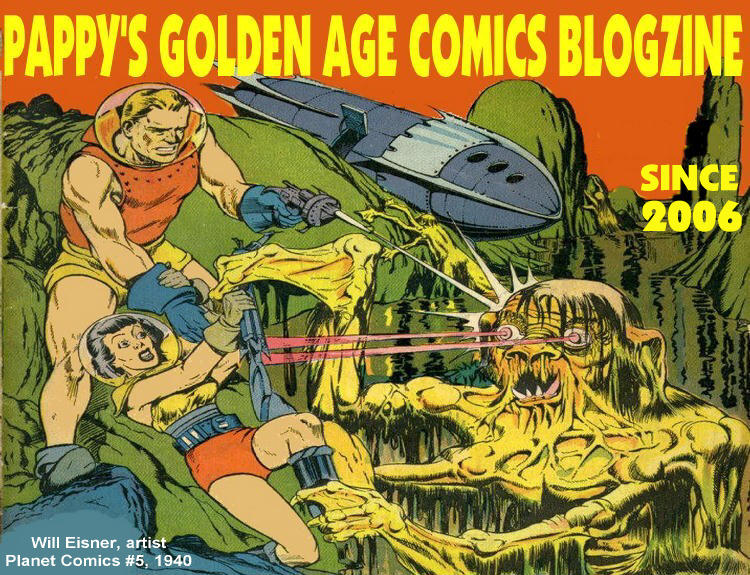Wilbur Underhill, bank robber, escape artist and murderer, was yet another sociopath operating in the twenties and thirties. He died with thirteen bullets in him. His demise wasn’t exactly as portrayed in Crime Does Not Pay #63 (1948). Underhill lived for a week after being shot, and I doubt one of the cops who shot him moralized that “Crime does not pay!” as Wilbur croaked out his dying breath. But, that was the final line of many a crime comic book, in a futile effort to deflect criticism from their violent, bloody contents. The nicknames given by the press to Underhill, the “Tri-State Terror,” and “Mad Dog” are oddly missing from both stories of Underhill I am presenting today.
Underhill’s story was told a few times in crime comics, and even in the pulp magazine, G-Men, Vol. 4 Number 36 (1936), in a three-page comic-styled feature. The artist was anonymous, but the story was written by Henry Marcus, using the pseudonym Clayton Maxwell. Marcus is a guy who ended up in jail for publishing obscene literature. Who knows? Maybe he knew jailbirds like Underhill when he was in the joint.
The color version of Underhill’s story was drawn by Fred Guardineer.












4 comments:
Hot dogs 10 cents? Hamburgers 5 cents? That's almost worth all the blood and mayhem!
One thing about these crime comics is always making the bad guys cry babies at the end; this guy was a sociopath and seemed to be a nihilist, he never seemed to lay low but this constant cycle of murder, escape, robbery. His wikipedia entry:
https://en.wikipedia.org/wiki/Wilbur_Underhill,_Jr.
Is actually more exciting then this yarn! It's pretty amazing how many robberies and murders this guy did. Why not the story about the innocent 2 year old killed in a shoot out? The fact that he got cornered once because he married a woman? That they were looking for him in armored cars?
Still a fun tale, as most crime comics are.
Gee, Brian, you would have flipped out in the 1960s. When I was a teenager I could put 3 gallons of gas in my car for a dollar, and go to the local fast food restaurant with my girlfriend for dinner. I could get two tacos for 50¢, two orders of fries for 30¢, and a small Coke was 10¢, so for $1.00 I got dinner for both my girl and me! Unfortunately, the cheap food gave us heartburn, so "dessert" cost 15¢ for a roll of Tums.
I would be interested in knowing when psychiatry first identified such things as a sociopath (a person with no conscience, lacking empathy)...because the way crime comics operated was that crime was always a matter of choice, and the criminal/killer was in full possession of his faculties, or if not he was "mad," in some misunderstood way. According to some estimates, one in four people are sociopaths, so we are probably just lucky we don't have a lot more murderers out there.
I think the way the censors mislabeled crime comics is that they claimed they led young people into a life of crime by "glorifying criminals." That was what my mother thought. I am a person with a conscience and nothing any criminal has ever done has ever influenced me to commit crime or murder.
Thanks for the Wikipedia link.
Juxtaposing two versions of Underhill's story is brilliant! It is fascinating to see how different artists and writers chose to tell his story. Also, the comic from G-Man magazine is surprisingly excellent. In some ways it is more effective in evoking the terror of Underhill than the version from Crime Does Not Pay.
If you have other true crime comics from G-Man, we'd love to see them; they are hard to find, and it's obvious they are worthy of further study!
Thanks, Pappy!
A bit more than two-and-half years after this entry, you offered us another telling of this story.
Post a Comment